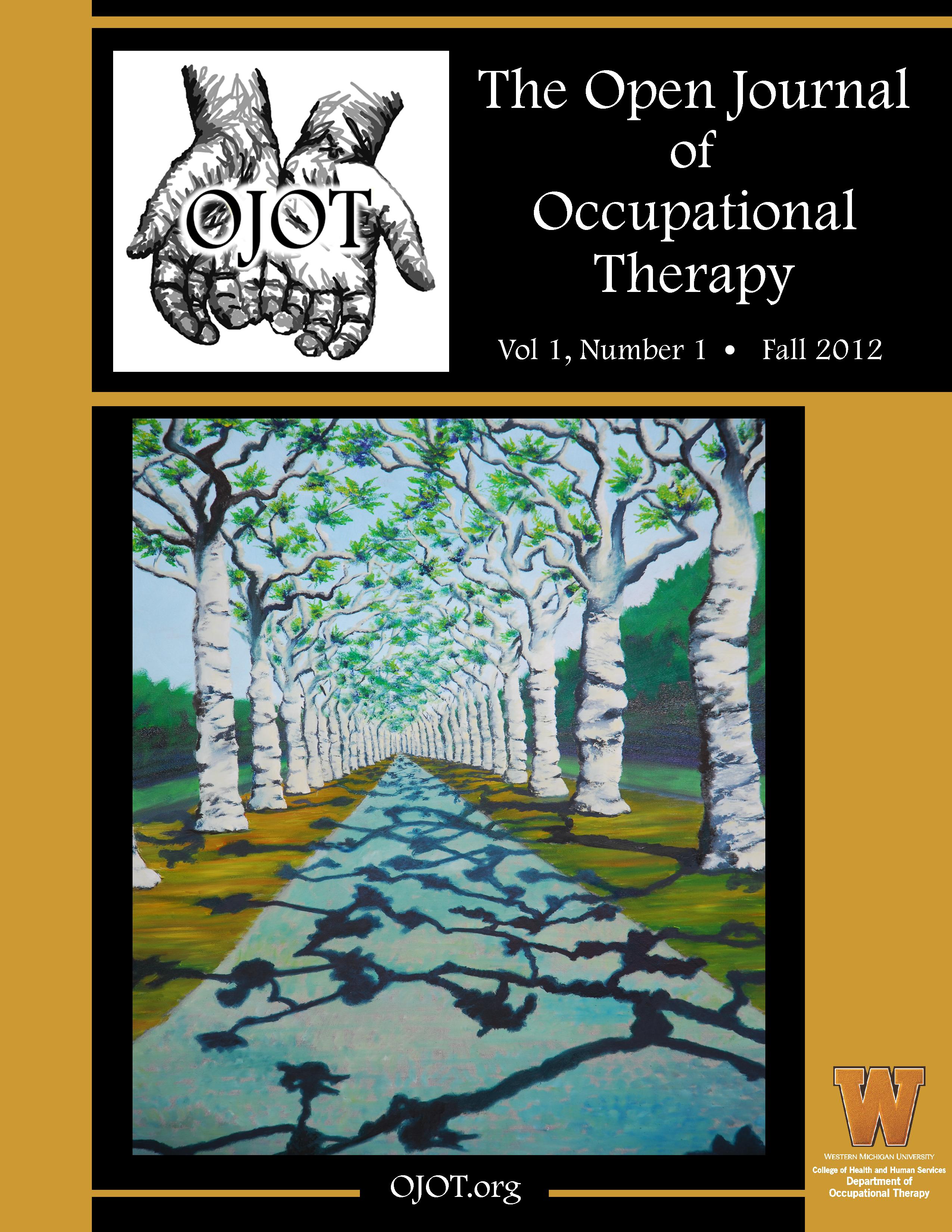ScholarWorks > HHS > OT > OJOT > Vol. 12 > Iss. 1 (2024)
Credentials Display
Nicole M. Gerhardt, OTD, OTR/L, CBIS; Jeremy P. Armstrong, OTD; Mijail D. Serruya, MD, PhD; MJ Mulcahey, PhD, OTR/L, FASIA
Abstract
Background: Upper limb neuromuscular impairments can adversely impact function. This case report investigates the process and outcomes of occupational therapy (OT) for training in the use of the NuroSleeve, a novel research-grade exoskeletal powered orthosis, with a participant with chronic right hemiparesis following a stroke.
Method: The participant engaged in 24 OT sessions using the NuroSleeve over 10 weeks. Therapeutic interventions included neuromuscular reeducation, device management, and engagement in occupation-based activities with training to use the NuroSleeve. The Canadian Occupational Performance Measure (COPM), ABILHAND, Patient Reported Outcomes Measurement Information System Upper Extremity Short Form 7a (PROMIS UE SF), Action Research Arm Test (ARAT), and Manual Muscle Testing (MMT) were administered before and after the 24 sessions.
Results: With the NuroSleeve, there were clinically important increases in COPM performance and satisfaction for 6/8 and 7/8 goals, respectively; ABILHAND showed a clinically important increase of 4.959 logits; and there was an 11-point increase on the ARAT, indicating a clinically important difference. T-score on the PROMIS UE SF was 33.7 (SD = 2) compared to 23 (SD = 2.8) without the device. MMT remain unchanged.
Conclusion: The data suggest that the NuroSleeve was the primary source of increased function and that incorporating OT with the NuroSleeve has benefits.
Recommended Citation
Gerhardt, N. M., Armstrong, J. P., Serruya, M. D., & Mulcahey, M. (2024). Outcomes of the NuroSleeve and Occupational Therapy on Upper Limb Function of an Individual with Chronic Hemiparesis Following a Stroke: A Case Report. The Open Journal of Occupational Therapy, 12(1), 1-8. https://doi.org/10.15453/2168-6408.2166

